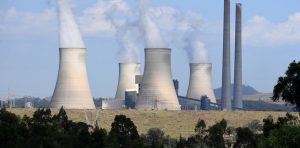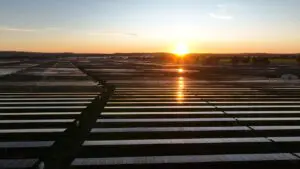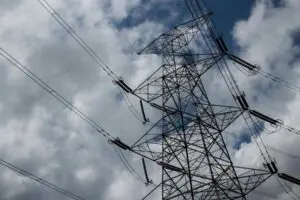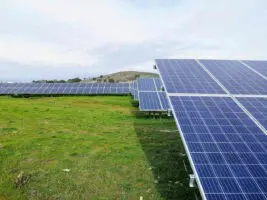A trip at AGL’s Loy Yang A brown coal power station in Victoria is unlikely to lead to higher wholesale price outcomes on its own. But it will make the southern region of the National Electricity Market more vulnerable – further outages (planned or otherwise) will reduce available capacity below normal operating levels.
A further unit trip could lead to flat load prices rising on average by over A$7/MWh over the next couple of quarters. This may not be a dramatic jump, but would leave a bad taste for buyers already playing in a high price market.
Major growth in renewable capacity over the next year – even though variable in nature – will help insulate Victoria and the NEM from reliability issues at aging coal plants.
Overview
In mid-May a generator at AGL’s Loy Yang A brown coal fired power station in Victoria unexpectedly tripped offline. It has not been back on since, and in early June AGL announced that it would likely be a further 7 months before the generator was repaired and back in action.
This sounds like bad news in a region of the NEM that already has limited coal generation capacity. But what does it really mean for prices?
The basics
Let’s start with a look at the generator in question and the broader market context. The tripped generator is Unit 2 at Loy Yang A, which has a capacity of 550 MW.
The power station as a whole has a total capacity of 2,200 MW made up of for equal units, so AGL had lost one quarter of its generation capacity at the plant.
Loy Yang A is one of three remaining brown coal stations in Victoria (and the broader NEM for that matter), the other two being Alinta Energy’s Loy Yang B (1,070 MW) and Energy Australia’s Yallourn W (1,480 MW).
AGL estimates that the outage will reduce ‘potential underlying profit after tax’ in FY20 by A$60 – A$100 million, which we assume is due to the cost of buying third-party power to fulfil contractual commitments during the first half of the financial year.
This cost could be mitigated through AGL’s insurance, although the company does not expect any benefit from this until FY21. (See AGL’s ASX release of 7 June 2019).
With a combined capacity of 4,750 MW, Victoria’s brown coal generators are the largest source of power in Victoria, and for the southern region of the NEM, i.e Victoria, South Australia and Tasmania.
Hydro and gas are the next largest generation sources by installed capacity in Victoria, with wind a close fourth, and utility scale solar is starting to make a significant impact for the first time.

So the unit represents a significant chunk of the region’s dispatchable, pre open cycle gas capacity. But this doesn’t necessarily mean that 550 MW of more expensive capacity must now be utilised to meet demand; as usual the NEM is more complicated than that.
While total brown coal capacity is some 4,750 MW, only around 4,000 MW is generating at any given time. One unit at a time tends to be down for routine maintenance on a rolling basis, while another unit often has less than full capacity available to the market.
The three power stations will typically plod along steadily at the 4GW rate, with a very high utilisation of the capacity that is available, given the undesirable cost of ramping these plants up and down.
On the surface, having one brown coal unit out of action is therefore pretty much business usual.
It is of course likely that all three operators of the brown coal stations in Victoria will do their utmost to maintain supply, not least because prices are remaining stubbornly high, but also to avoid the inevitable political pressure that would come from any perception of profit opportunism.
The upper range of price bids from brown coal generators may increase above the usual bands to reflect the tighter supply demand balance, but as brown coal is rarely a price setter, this is unlikely on its own to materially impact the wholesale price.
In fact, capping brown coal capacity to 4,200 MW – the capacity available after the outage of Loy Yang A Unit 2 – does not shift our price forecasts at all, as we don’t tend to allow for availability higher than this in any case.
But is clear that this outage increases the vulnerability of the power market in the NEMs southern region.
Seven months is a long time in the NEM, and if another unit from any of the coal stations goes offline during the lengthy rebuild process, only between 3,650 and 3,830 MW will be available, meaning Victoria will find itself about 170 to 350 MW short of it’s usual coal output. This will require higher priced sources to fill the gaps – read hydro or open cycle gas – increasing the price outcomes in Victoria.
Capping available brown coal capacity in our NEM price model to 3,800 MW, reflecting the outage at Loy Yang A and a theoretical additional unit out of action, we see increases in average prices over the next two quarters across all price categories in the southern region of the NEM.
Our flat load prices rise by over A$7/MWh for both quarters that the AGL unit is likely to be down. Off peak prices are impacted more than peak (with peak prices defined as 7am to 10pm).
But a particularly interesting result is how solar dispatch weighted prices are relatively insulated from our theoretical scenario of a second unit outage by the last quarter of the year.
Lower seasonal demand in the final quarter of the year means that higher priced fuels are required less during daylight hours, even in the event of our double-outage scenario. This would be a different story in the March quarter.
Individual intervals may experience much higher price increases than the average of course, depending on demand conditions and supply availability from other generation types.
Difference in price forecast outcomes, base case versus two brown coal unit outages, A$/MWh

But this risk is likely to be mitigated over the short term as a result of significant renewable capacity growth. We forecast an expansion in utility scale renewables in Victoria of over 2.5 GW AC by the end of Q3 2020, which is growth of some 150% (some of this capacity is currently undergoing commissioning).
The majority of new capacity is wind. When we scale the new capacity by an average wind capacity factor for Victoria, we estimate that the average expected output from new wind farms in the state will be approximately 700 MW by the end of Q3 2020, more than enough to cover an outage at any of the brown coal power units.

Ben Willacy is an associate of ITK, and has 18 years experience as a global energy sector analyst, with experience across renewables, oil and gas, and coal. He led Wood McKenzie’s global coal supply team and co-founded Sustainable Energy Research Analytics.










